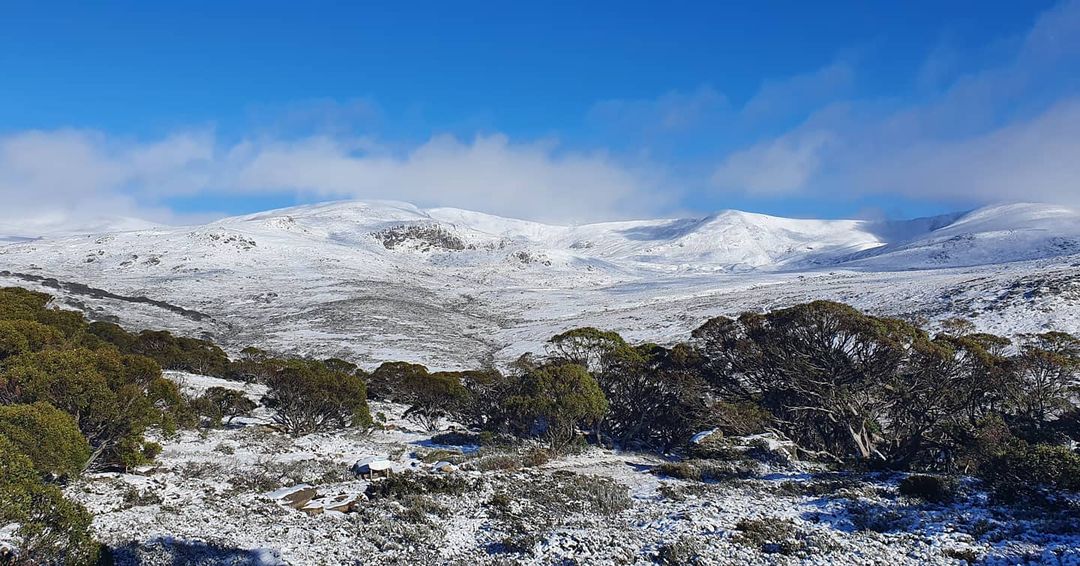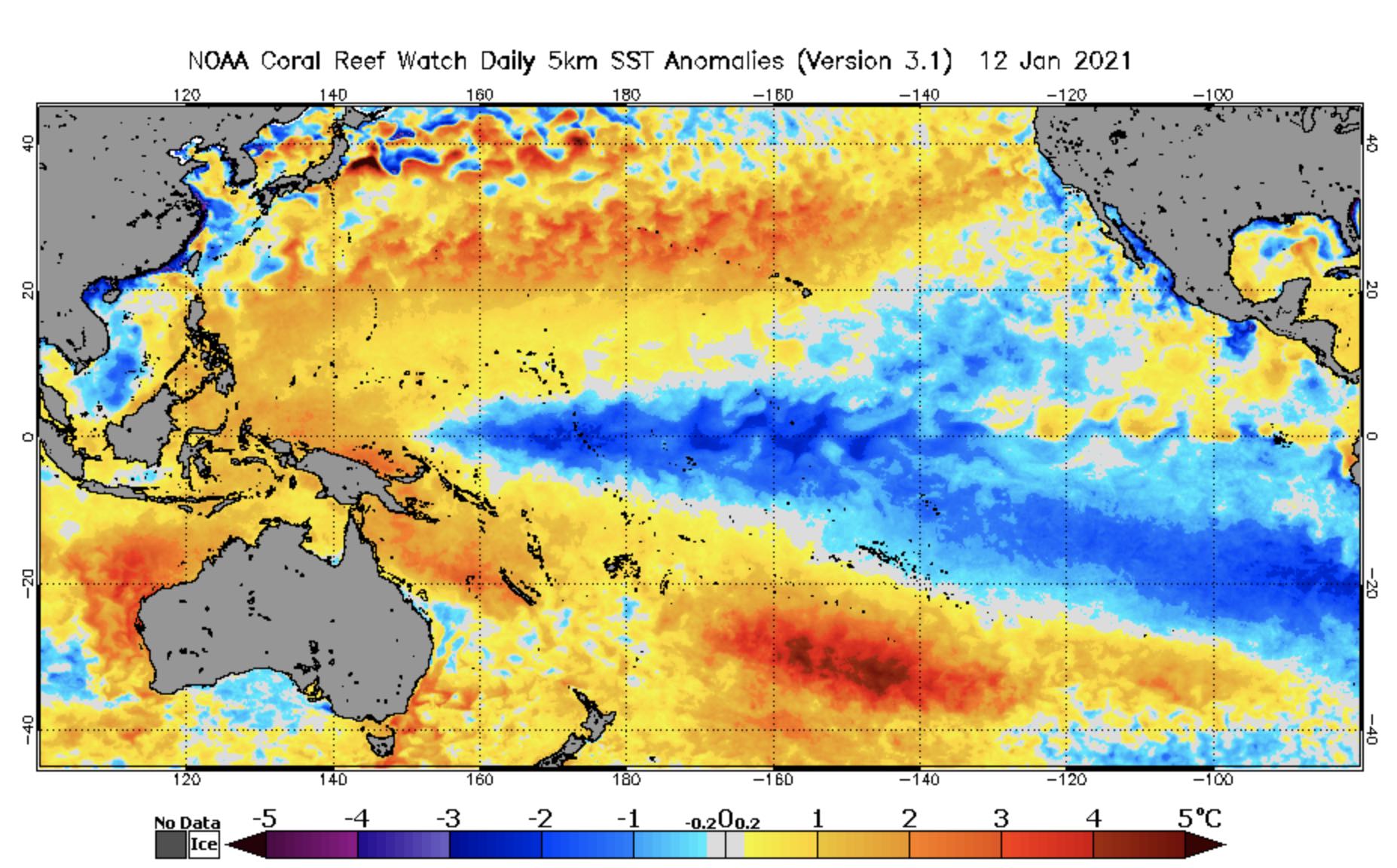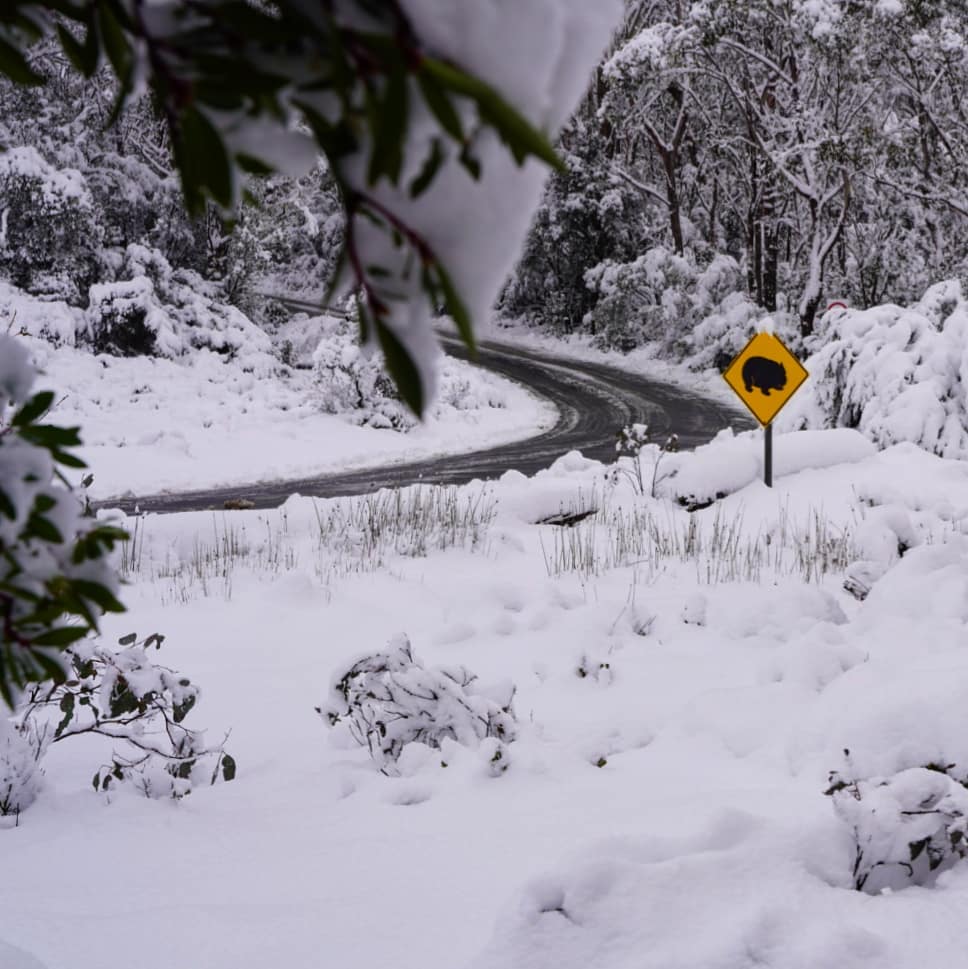Is Australia in for a good snow season?
So here we are at the middle of autumn and parts of southeastern Australia just saw a decent bout of snow on the weekend. But what does this early-season cold snap mean for the rest of Australia's 2021 snow season?
Let's have a look at what to expect in the Australian Alps during the next six months.
-- Outlooks and forecasts --
Before we start, it's important to point out the difference between a weather forecast and seasonal outlook.
When we put together a long-range seasonal snow outlook, we are not looking at individual weather systems.
Instead, we are using broad-scale climate drivers to predict which weather patterns will most likely be dominant during the coming months. So instead of forecasting which days will see snow and how many centimetres (or metres) will fall in these events, we are predicting whether the Australian alps will see above or below average snow during the season as a whole.

Image: An early-season dusting of snow seen in the NSW Alps at the start of this week. Source: @tommytomtucker / Instagram
-- Climate drivers in play --
As we head through the middle of autumn on our descent into the colder months of winter, there are currently no strong climate drives in play near Australia.
The La Niña pattern that influenced Australia's weather during the last six months officially ended in late-March. This means the Pacific Ocean is currently in a neutral phase and it's likely to remain this way until at least the end of winter.

Image: This is what the Pacific Ocean sea surface temperature anomalies looked like back in January, when La Niña was in full swing. It has since broken down, with neutral conditions (neither La Niña or El Niño) now in place and likely to persist in the Pacific Ocean through winter.
On the other side of the country, the Indian Ocean Dipole (IOD) has also been in a neutral pattern all year. As a result, the Indian Ocean hasn't played an abnormal role in determining Australia's weather in recent months.
There are early signs that a negative phase of the IOD may emerge as we head into winter. While this climate driver is notoriously difficult to predict at this time of year, this shouldn't be ignored. A negative IOD would increase the likelihood of above-average snow in southeastern Australia this winter.
The other main climate driver that influences Australian snowfall is the Southern Annular Mode (SAM). The SAM is an index that measures the north-south displacement of the westerly winds that flow between Australia and Antarctica.
When the SAM is in a negative phase, these westerly winds and cold fronts they carry are located further north than usual, which typically causes more cold outbreaks, and snow, in southern Australia. On the other hand, positive SAM phases can limit snow-bearing systems in Australia during winter.
Unfortunately, the SAM is much harder to predict at the seasonal scale compared to the other two climate drivers mentioned above. Most models suggest that the SAM will remain in a neutral phase into the back end of April, but what happens after that is up in the air.

Image: A snowy day at Cradle Mountain, Tasmania last winter. Source: @wanderingandalwayslost / Instagram
-- So what does all of this mean? --
When we combine a neutral Pacific Ocean, a neutral or negative Indian Ocean Dipole and the prospect of negative swings in the Southern Annular Mode this winter, the outlook suggests that we should see near to above-average snow in the Australian alps this season.
Of course, no two Australian snow seasons are the same and the difference between a boom and bust can come down to one or two big snow-bearing systems.
As the season unfolds, we will be keeping a close eye on the horizon and letting you know when it's going to snow on the Weatherzone app and website.